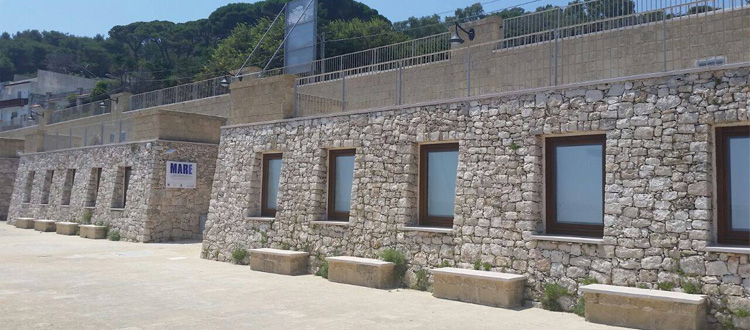3rd Marine Zoology International Summer School
An integrated approach to marine invertebrate biodiversity:
evolutionary and functional adaptations
Location: Avamposto MARE
Tricase porto (Lecce), Italy
21-26 September 2015
Scope
Invertebrates represent the largest component of biodiversity and the widest evolutionary adaptive radiation on our planet, with more than 2,000,000 morpho-species formally described (95% of the overall animal biodiversity). They include aquatic organisms with relatively simple body plans such as sponges or cnidarians as well as morphologically complex taxa, such as molluscs, echinoderms and protochordates. Among them, several taxa have been established or are currently emerging as laboratory model systems, simple versions of more complex organisms. By investigating life cycles and functional adaptations of marine invertebrates, scientists learn on the evolution of Metazoa.
Research on marine invertebrates led to some of the greatest scientific advances. Studies on squid biology led to the comprehension of the molecular basis of synapytic transmission; investigations on sea urchin were fundamental toward the understanding of sexual reproduction and early development; polychaetes provided key information on the evolution and development of centralized nervous systems; cnidarians offered fundamental insights on aging, stem cell biology and the molecular mechanisms controlling cell differentiation; sponges, placozoans and ctenophora are groups for tracing back the evolution of multicellularity. Furthermore, marine invertebrates are considered a largely untapped source of bioactive compounds.
In-depth knowledge of adaptive strategies of marine invertebrates is mandatory for the comprehension of the organism-environment interactions, the intra-specific and inter-specific relationships, the functioning of biological communities and ecosystems, and the management of resources in conservation programs. The third edition of the Marine Zoology summer school is organized in the framework of a joint agreement of academic cooperation between the Universities of Milan, Padoa, Palermo, and Salento (Lecce). The scientific themes will cover comparative analysis of main adaptive strategies across several invertebrate phyla to raise interest on invertebrate biology and evolution.
Finally, this international school will provide the opportunity for exchanges between students of different European universities and can be credited as a Master Course Program, acknowledged by 4 ECTS (CFU) through a specific final verification test.
Course structure
It will be taught in English and will consists of lectures, field and laboratory activities and tutorials addressing morphology, anatomy, ecology, developmental biology (including eco-devo and evo-devo approaches) of selected marine invertebrate groups in the general framework of their reciprocal evolutionary relationships, with focus on their adaptive strategies to various environments, life cycle adjustments, environmental stress responses, and immunobiology.
Active participation will be essential as students will make observations on living invertebrates, carry on experimental bench work, analyse results, and discuss recent bibliography. In addition, communication skills will be developed, including informal interactions with instructors, collaborative work with other participants, oral presentation of their interests, written report describing the experiments and analysing their own results.
•Fieldwork: The seaside location (directly on the the Strait of Otranto) of the new marine laboratory Avamposto MARE and the availability of the UNISALENTO research boat “Pelagia” will offer the opportunity for invertebrate sampling by plankton tows, snorkeling, diving (only patented divers).
•Practical work: Students will work on microscopes and dissecting microscopes throughout the course to carry on direct observations of features presented by lecturers.
Contents (Main taxa, Topics, Models)
• Cnidaria (Anthozoa, Medusozoa), Cycliophora, Annelida, Mollusca, Xenacoelamorpha, Echinodermata, Pterobranchia, Tunicata
• Morphological and functional adaptations (sensory-motor integration, respiration, nutrition, locomotion and reproduction), life cycles and life histories,
• Regeneration, aging, reverse development, population outbreaks.
• Stress responses and Immunobiology
• Actinia equina, Anemonia viridis, Turritopsis dohrni, Clava multicornis, Clytia hemisphaerica, Pelagia noctiluca, Cotylorhiza tuberculata, Aurelia spp. Symbion spp., Platynereis dumerilii, Symsagittifera roscoffensis, Anthedon sp., Paracentrotus lividus, Arbacia lixula, Rhabdopleura sp., Botryllus sp., Ciona intestinalis, Phallusia mammillata, and many more.







